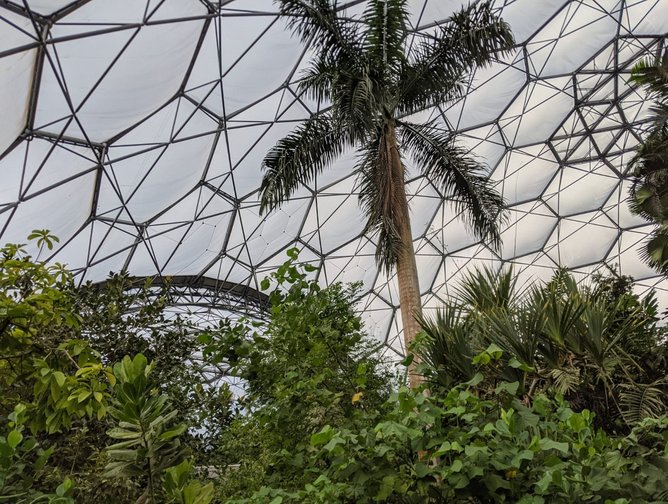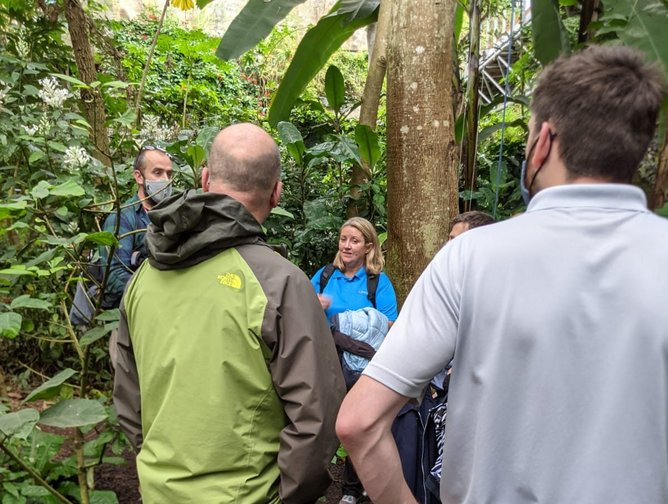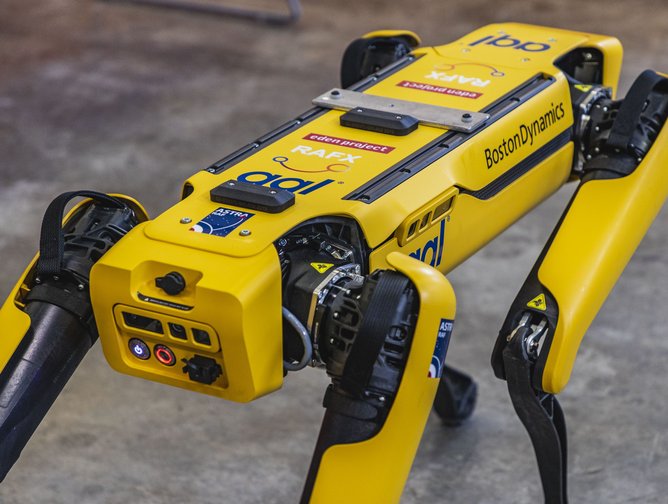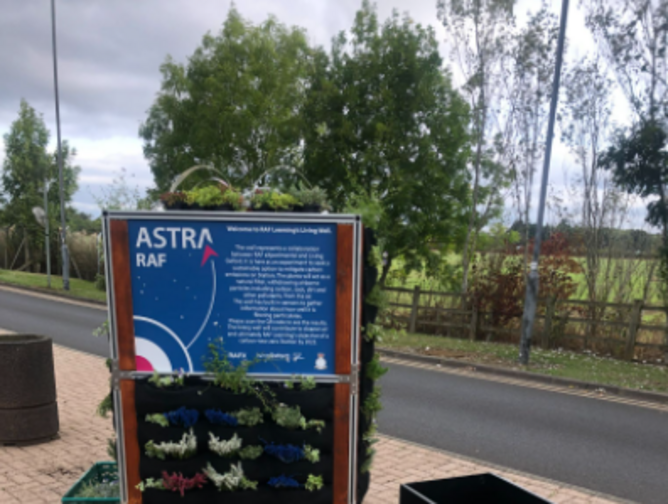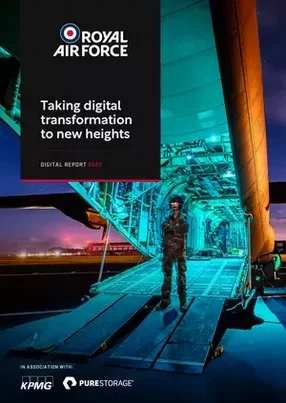The Royal Air Force (RAF) was born from technological transformation. The UK’s air force formed in 1918 and became the world’s first independent air force, playing a famous role in the Battle of Britain during the Second World War while also pioneering technology from radar to the bouncing bomb and jet engine.
The RAF has played a key role in keeping citizens of the UK safe and continues to innovate to maintain that protection – tackling new cybersecurity threats and digitising processes while also keeping pilots and commanders one step ahead of any potential enemy.
RAF eXperimental – or RAFX – is the innovation hub of the RAF. It’s an ongoing and evolving mission largely taking shape in North Yorkshire at RAF Leeming – the perfect testbed for new technology and processes and unique in that it has representation from every Group in the Service. RAF Leeming is also home to 90 Signals Unit – the largest communications unit in the RAF.
The fact that the base is also a closed environment (“behind the wire”) also means it is ideal for testing technology in a closed, controlled environment.
Group Captain Blythe Crawford OBE is Station Commander at RAF Leeming, a position he has held since November 2018 following a tour as RAF exchange officer within the Chief of Staff of the US Air Force’s Strategic Studies Group in Washington.
He is now the driving force behind RAFX and Astra – the campaign to build the Next Generation Royal Air Force. He is empowering airmen with bright ideas to turn those into something tangible via RAFX.
“The challenge that we have is that we are still quite set in our ways and trying to run a fifth-generation air force with 1990s processes and technologies,” admits Crawford. “What we want to do here at Leeming is unleash, empower and enable our people to maximise their full potential and create the Next Generation Air Force.”
Crawford goes on to explain how Leeming is unique in its diversity, which makes it the ideal melting pot or petri dish to experiment and try out new solutions. From the “Aggressors” of 100 Squadron to the 90 Signal Unit comms engineers, RAF Regiment Squadrons, University Air Squadrons, training units and Reservist Squadrons – Leeming is a natural bed of cross-functional teams and each individual also brings their own skills, often beyond their rank and duties.
Being behind the wire also provides a closed environment, which proved invaluable when working with NHSX Track & Trace during the COVID-19 lockdown.
“We had some 400 personnel from across the base who all downloaded the Beta version of the NHS Test & Trace app,” explains Crawford. “We had a couple of people who were ‘guinea pigs’, simulating that they were infected and who then went around the base testing the application under different conditions and different proximities, to make sure that it worked.
“There are mutual benefits for other partners to work alongside us, to develop some of their capabilities because of the unique testing ground that we have.”
Crawford added that he is keen to promote this collaborative approach with everyone from startups to academia, as well as other UK government departments. He also laments that while the UK is strong globally when it comes to research, we lag behind when it comes to developing those ideas. By partnering with academic institutions, he hopes RAFX can help accelerate the development of these bright ideas.
“Situated here in North Yorkshire, RAF Leeming is right in the middle of the Vale of York which we recently rechristened ‘Silicon Vale’ because we are surrounded by so much high-tech and such valuable academic research,” says Crawford.
“We have Newcastle and Durham to the north, we have Leeds and Sheffield to the south, Teesside University is one of the world's leading gaming universities, and we have also partnered with Northumbria and York, and we are and bringing that rich tapestry of academic research in.
“Traditionally, we in Defence have been a laggard when it comes to adopting capabilities that wider society would use. We're still very much a paper-driven organisation when everybody else has gone digital, so how do we accelerate that digital transformation and how do we leapfrog from being a technological laggard to actually being at the cutting edge? By partnering with universities and with startups to accelerate that process and to get to the front of the queue with regards to technology rather than being a late adopter.”
One of the areas RAFX is focused on is the digitalisation of processes and practices right across the Station. At Leeming, these can be experimented with before scaling across the rest of the Service.
“People talk about digital bases, they talk about smart cities, but to do that you need a digital backbone and what we've tried to do here is to make ourselves a lot more connected,” says Crawford. “We have business internet across the entire station. We've also recently installed are our own private 5G network to create an Internet of Things platform and backbone that covers the entirety of the station, which allows me to connect anything to anything else right across the site.”
Crawford also explains how the digital backbone can help RAF Leeming meet its ambitious carbon net-zero by 2025 target by creating a digital twin of the base, brimming with smart sensors on energy management systems and waste systems to create a single dashboard.
“My Nirvana, for example, is where I could put on a set of augmented reality goggles, look at a 3D augmented picture of the station and – taking the data that we gather from those sensors – be able to pick up a building, look at its carbon footprint, look at its energy management, and control all of that from a virtual reality environment,” he says.
Asset management tracking can also benefit significantly from the digital backbone, especially over such an extensive site – RAF Leeming covers 1,260 acres. This still involves “running around the base with a clipboard and pen”. Geotagging all of those generators allows the base to operate more efficiently and effectively.
COVID-19 naturally accelerated the digital transformation agenda, and also provided an opportunity to take proactive ownership of the outcome. Crawford says they knew they were going to reset to something different and decided to determine that for themselves.
The way they did that was with a project called Hacking for Recovery – a series of sprints right across the station that brought everybody in to see what ‘good’ looked like for Leeming. This forced everyone to challenge some of the previous policy demands and rules and look at a new way of working that exploits technology to deliver better results for the station.
Of course, being an RAF base, there is a continuous output – you can’t just have everyone experimenting and innovating, which is why a separate team has been assembled to do just that, housed in a dedicated building at Leeming that will grow into an innovation incubator.
“One of the first things I did when I arrived here was a poll across the station asking everybody what are the top 10 things that annoyed them about the RAF,” recalls Crawford. “They gave me a list of 64. So we decided to roll our sleeves up, started at the top and addressed some of those – and the majority were to do with our processes and digital transformation in terms of the methodology that we apply here.
“We form cross-functional teams by pulling a select group of individuals from the core functions of the Air Force. We run sprints against that problem until we develop a minimum viable product. The core innovation team will then take that innovative product development a little bit further and then what we do is we put it back into the continuous performance engine here at Leeming and we beta test it to death on the station until we refine it into exactly what we want. At that point, it is then ready to be scaled across the rest of the service.”
Astra is all about creating the Next Generation Air Force – an Air Force that can surpass the wider technological advancements happening in society. Crawford uses the analogy of the Red Queen problem from Alice in Wonderland where you have to run as fast as you can just to stay in the same place, but run even faster if you want to go somewhere else.
“That's the challenge we have in today's Air Force,” admits Crawford. “Technological advancement in wider society is moving at an incredible pace and for us to keep up with it we need to change our cultural mindset about how we adopt those new technologies and processes, how we keep up with the digital transformation that the rest of society is going through, and keep at the forefront of that to create the Next Generation Air Force.”
Group Captain Martin Brockie is the commanding officer of 90 Signals Unit which is responsible for providing the Royal Air Force with the freedom of action and mission assurance it needs in cyberspace to enable it to deliver air and space power on behalf of the nation.
Brockie says one of the priorities for the unit is to drive innovation and see how to exploit the freely available technology now in the commercial sector and bring it into the military context. One way the unit is doing that is with Project Raven.
"Raven is something the team here came up with about five years ago," says Brockie. "They were getting frustrated with the equipment and thought they could do better themselves - systems and hardware - to actually deliver the services we need."
Raven has met a number of particular use cases – either as an experiment or to plug a capability gap. As an example of an experiment, the Raven team linked a Typhoon fighter pilot with RAF Regiment personnel on the ground and Air Command in High Wycombe with full-motion video, all on the same voice radio network and all seeing the same picture. Air Command is able to give release authority for weapons, effectively linking the sensor to the shooter to the decider.
Exploiting a software-defined virtual architecture, Raven is able to respond to the changing information requirements – pretty much how everything in the modern world is designed these days – and bring it into a military context.
One of the biggest challenges is dealing with legacy equipment that is often locked into a particular vendor and designed on a particular set of hardware.
“The Raven team has proven that the talent is within the Royal Air Force and within wider Defence to design and deliver solutions rather than asking industry to come up with a range of solutions to meet our requirements,” says Brockie.
“We know that Raven can deliver. By procuring from the commercial market at the time of need, it allows us to exploit the latest technology giving us the flexibility that we require to secure, sustain and deliver information services at the speed of relevance.”
Traditionally, Defence has worked with large ‘primes’ – large organisations that certainly helped achieve big capital capabilities like ships, planes and tanks. However, as the RAF moves towards a digital age, it needs to look at different partners that can exploit other areas of the RAF’s needs.
To that end, the RAF is looking to partner with smaller companies, academia and startups, to transform how they do business in the future – moving away from the customer/vendor relationship to working in partnership. But how easy or attractive is it for nimble SMEs to consider working for an institution like the RAF.
“We recognise the fact that we are a very bureaucratic organisation – most government departments are,” says Crawford. “But we also recognise the fact that in order to interact with the smaller companies and startups, we need to change some of those organisational structures and processes to make it much easier for them to interact and to collaborate with Defence
“We've been working quite hard to look at our organisational structures to create opportunities for the smaller companies to engage with us. A few years ago we set up the rapid capabilities office and the whole purpose of that organisation is to rapidly take technologies that are out there and accelerate them through the procurement process so we can incorporate them a lot quicker into the organisation.”
So what might a Next Generation Air Force look like? Crawford says it will be informed by data, connected, and collaborative. It will have human-machine teaming, using artificial intelligence and machine learning to best deliver information to inform decision-makers.
And finally, how important is digital transformation for the RAF – an organisation with more than 103 years of innovation? Brockie says information is a key enabler but is not the “be-all and end-all”.
“We like to say we are the digital backbone of the Royal Air Force,” he says, “because we deliver the information services needed, suitably protected. to allow air platforms to conduct their mission.”
Brad Buck is the programme lead for digital optimisation, which is the Royal Air Force’s digital transformation program and also the head of RAF Digital Services, which develops and delivers software and data products.
“RAFX is delivering experimentation, so we facilitate their ability to exploit technology,” says Buck. “We support them with the technology roadmap, making sure that they have a path to production.”
When it comes to working with 90SU, Buck and his team are responsible for tasking AX (application exploitation) flight – prioritising digital services and activities for their developers to work on, while also defining reference architecture and digital patterns which they can exploit and use moving forwards.
Buck believes the COVID-19 pandemic presented a significant opportunity in the way the Air Force wanted to be able to exploit its data and make sure its workforce was prepared for working from home – made possible by the digital backbone and cloud capabilities.
Buck says the RAFs digital transformation is built on civilians, contractors and a whole force spectrum of skill sets.
“We tried to capitalise on industry engagement when it comes to keeping up with the pace of technology. We then try to make sure that’s sustainable by using the civilian resource as a backbone to that skill set, and then making sure that those skills can transfer to the military. Although we might be delivering some HR apps today, in the future those need to be deployable and able to solve real Air Force problems on operation.”
Buck says there is a wealth of hidden talent with the RAF – capable of delivering digital skills, services and transformation.
“Cognitive diversity means that you can't always look at the rank on someone's shoulder and determine whether or not that makes them qualified or the best person for the role,” says Buck. “Within digital services and the transformation programme, it doesn't matter what rank you are – it matters what level of capability you have and what value you bring to the project or product you're working on.
“Hierarchy is incredibly important when it comes to the military, but from our side when it comes to being able to explain technical skills and technical capability, my flight lieutenant is a full-stack developer – there is nobody better qualified than him to be leading some of our application development. So why should I care if he’s a flight lieutenant? He's better than me, and therefore I should trust his advice and guidance.”
It’s an exciting time in the RAF right now and that buzz comes across from all of the personnel involved in this vital digital transformation. Buck likes to use the line ‘data at the heart’ for the future of the Air Force fit for any eventuality.
“We need to make sure that we're capitalising on Defense Digital and all of the initiatives that they're delivering,” says Buck. “I don't see this as being 18 months of activity. We are just laying the bedrock for the next 10 years.
“We need to make sure that we're getting the continual buy-in from the senior leaders across Defence, to make sure that digital continues to be at the heart of what it's trying to achieve, because the demands are only getting greater."
